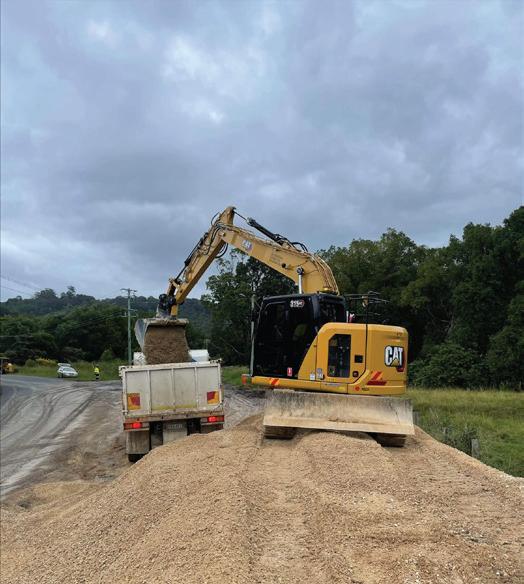
2 minute read
CALL FOR FLOOD REVIEW TO PREVENT FUTURE RISK
NSW Farmers is calling for a comprehensive, ongoing review of devastating fooding during La Nina to prevent future threats to people, property and livelihoods.
Communities across the state experienced heavy rainfall and widespread fooding from March 2021 to the end of 2022, causing an estimated $5 billion in damage to homes, businesses, roads and other infrastructure.

NSW Farmers President Xavier Martin said many people had reported unprecedented damage resulting from these foods, and called for a review into foodplains and planning decisions that may have exacerbated the problem. “We’re concerned that foodwater went places it hadn’t previously gone, and a lot of my members are saying they think public and private ‘food works’ may be a contributing factor,” Mr Martin said.
“Levees, roadways or other structures built on the landscape alter the speed, depth and movement of foodwater, and we’re concerned that this is why we saw unexpected fooding that presented a real threat to lives.

“We support the NSW Water Minister’s call for improved modelling, but beyond that we need a comprehensive, ongoing review of public and private works so we can get to the bottom of what went on and more importantly understand how to prevent future food impacts.”
Many months after the foodwater subsided people were still trying to pick up the pieces and recover from these natural disasters, Mr
Martin said, but among farming businesses the doubt and uncertainty was presenting real challenges to future productivity.
“Some of our members have serious doubts about whether buildings and paddocks that were thought to be safe might be inundated again, and they’re wondering whether they should rebuild a shed or repair a roadway if it might simply be destroyed again,” he said.

“This doubt and uncertainty is having a huge impact on productivity – this is a time when we need every part of agriculture fring on all cylinders to really drive our economic output.
“It’s the same for towns, we’re seeing entire communities fnd it diffcult to get insurance, and that’s having a major impact on those people – with so much doubt and uncertainty for homes and businesses, and with such a diffcult rebuilding effort still ahead of them, we would hate to see once vibrant towns collapse.”
Mr Martin said the state government had a once-in-a-generation opportunity to build back better from this major, widespread disaster, and set up a process that would protect people, property and the environment, and improve planning certainty into the future.
“Flooding rains can’t be avoided, but we can avoid exacerbating the problem, and we can prevent future loss of life, of livelihoods, of property and of business,” he said.
“We need to make sure we have ft-for-purpose planning rules and accurate modelling that takes into account the cumulative impact of food works and looks at the movement, depth and velocity of fows.
“This might involve aerial scans and talking to people on ground about their experiences, but the end result we want to see is that if a proposed new levee bank or roadway or dam will food a town or a property, it gets changed to avoid that impact.”
Australian dairy leaders have warned locallyproduced milk is under threat as soaring costs and falling prices force farmers to leave the industry.
NSW Farmers Dairy Committee acting chair Malcolm Holm said “a perfect storm” of events was making it harder and harder to be a dairy farmer every year, with a drop in prices from processors coinciding with high costs, competition for land, and a lack of confdence in the industry.

“The family dairy business is becoming harder and harder to manage and consumers










